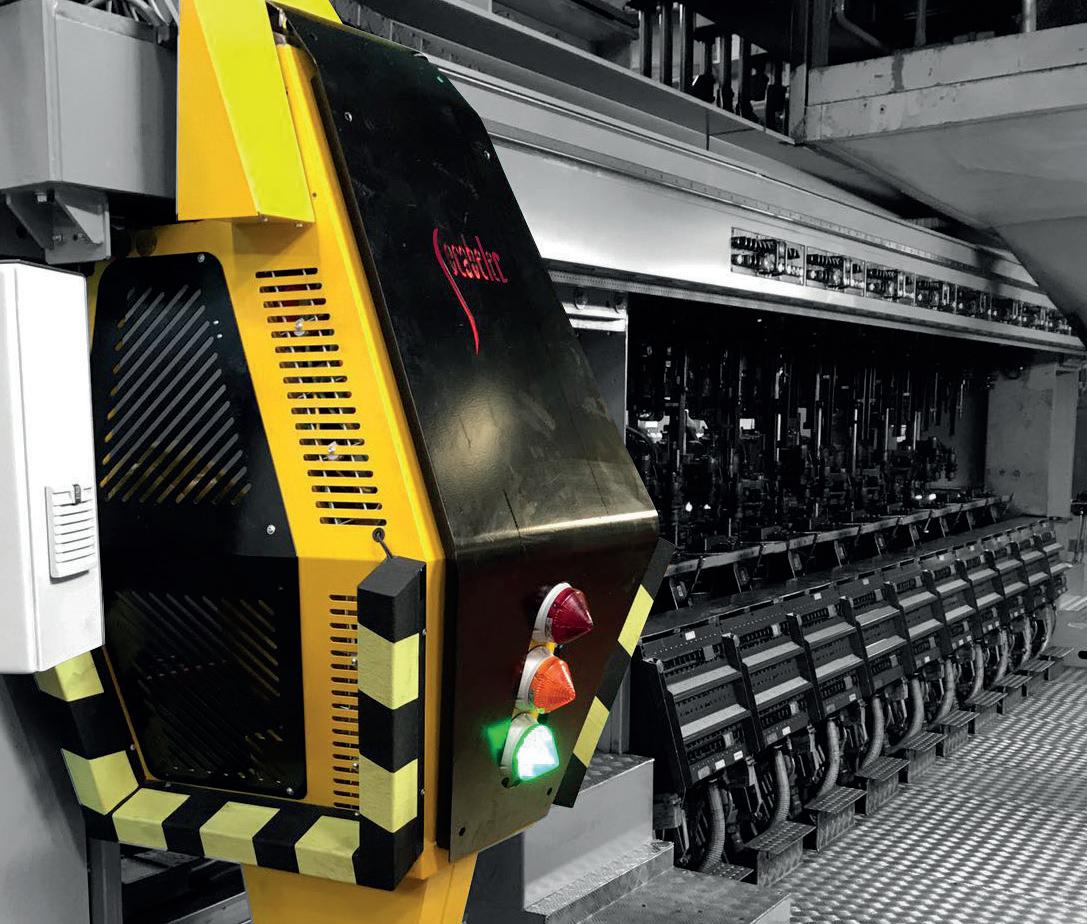
5 minute read
Environment: Krysteline
Cullet production is only part of the challenge
Steve Whettingsteel* discusses the increased importance of cullet as the glass industry tackles its CO2 footprint.
More than 50 million tonnes of glass is produced a year globally but less than 40% is used for new glass production due to limited furnace capacity, quality, colour disparity, location, and economics.
Sustainable low CO2 solutions are needed for the glass which is unsuitable for use in new glass production.
Considering the commercial viability of this global problem requires a more inclusive approach, one not necessarily structured solely for glass cullet, but one where markets are driving the recycling, rather than legislation or recycling determining its use in markets offering CO2 savings over more traditional products.
All markets must offer environmental and economic benefits, focusing on the needs of each individual client and establishing an inclusive strategy ensures commercial viability of glass recycling no matter its location or traditional constraints.
Innovative technologies to recover all types of glass no matter its type, size or quality offer challenges, in all cases it is clear that the true market potential and value of recycled glass is determined by the level of processing.
Our experience shows innovation enhanced by effective knowledge transfer partnerships and collaborations, working with governments, universities, and other technologies to develop low CO2 solutions have long term benefits.
Cooperation with universities has established innovations spanning agriculture, horticulture, composites and pozzolans, each research project assessing and developing the market, creating credible data, and enhancing technology for their cost-effective production.
As markets evolve demands for thermal cleansing and ever finer materials drives innovation, improves productivity and enhances market viability of materials previously only suitable for landfill.
Krysteline’s global Distributor and Sales agents are the eyes and ears of our marketplace, offering guidance on market









demand, creating and developing relationships with end users and providing solutions which not only meet commercial goals but offer enhanced knowledge transfer.
International universities are playing a substantial role in Krysteline’s evolution, providing credible R&D activities while disseminating knowledge across markets, growing interest, and stimulating demand.
When coupled to tangible CO2 valuation, glass starts to take on a new look, offering value across all sizes, colours and compositions.
The British Government and the EU continue to play a key role in the evolution of sustainable glass recycling, investing in R&D of new technologies and supporting market development as well as providing clarity on how CO2 in the waste industry should be quantifi ed and qualifi ed.
Our dealer network is often supported by the British High Commission (DIT) offi ces around the world which has brought together a greater level of global cohesion, bringing together businesses of all types, not just those in the waste sector, creating a unifi ed mixed glass solution no matter its location.
These technological innovations and the creation of high value end products are changing the way people view glass recycling.
Gone are the days of glass being seen as the poor relation, a clear path is evolving.
Recent work has seen a major resort chain moving away from traditional waste disposal to one of resource recovering, engaging clients, moving to an open policy, demonstrating the resorts capability to recover, segregate and repurpose many of the waste streams generated on site, utilising the natural elements of rainwater harvesting and solar generation, but always closing the loop on how each of these technologies is recycled at the end of their life.
Opening up the onsite recycling facility to clients and seeking to dramatically decrease its own CO2 footprint is an important factor in seeking to achieve carbon neutral status.
By challenging the common viewpoint of waste glass being only truly recycled when converted into cullet a clearer strategy has gradually evolved.
At no point is it suggested that cullet should not be the primary market where it is both economic and its CO2 value demonstrable.
The economic future of cullet use is determined by making the whole glass recycling landscape one which has more transparency, offering the recycler the opportunity to choose its market based on local and fi nancial conditions, not being constrained by a market which is challenged by its economics.
Effi cient and effective alternative markets for the glass destined for landfi ll or low value aggregate offers market stability to the whole glass recycling industry, creating a confi dence in glass, which has been lacking for decades.
As the world’s recycling industry understands more clearly the CO2 footprint of its products at each part of the collection and repurposing process it is likely to play a more signifi cant role in its use or value. Krysteline is well placed to provide sustainable markets across a broad spectrum of locations, all considerate of their CO2 footprint. �
* CEO & Managing Director, Krysteline Technologies, Southampton, UK www.krysteline.com



















